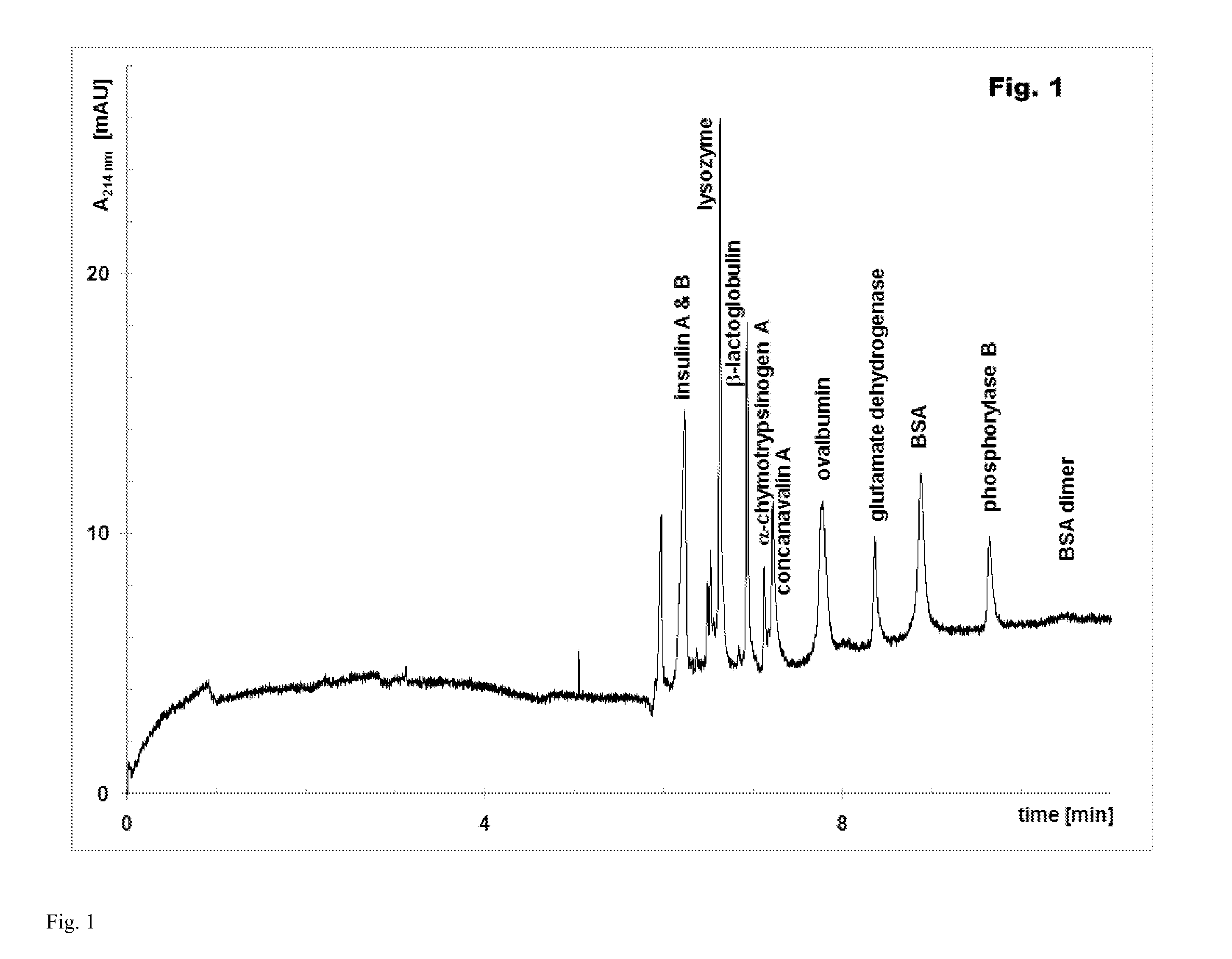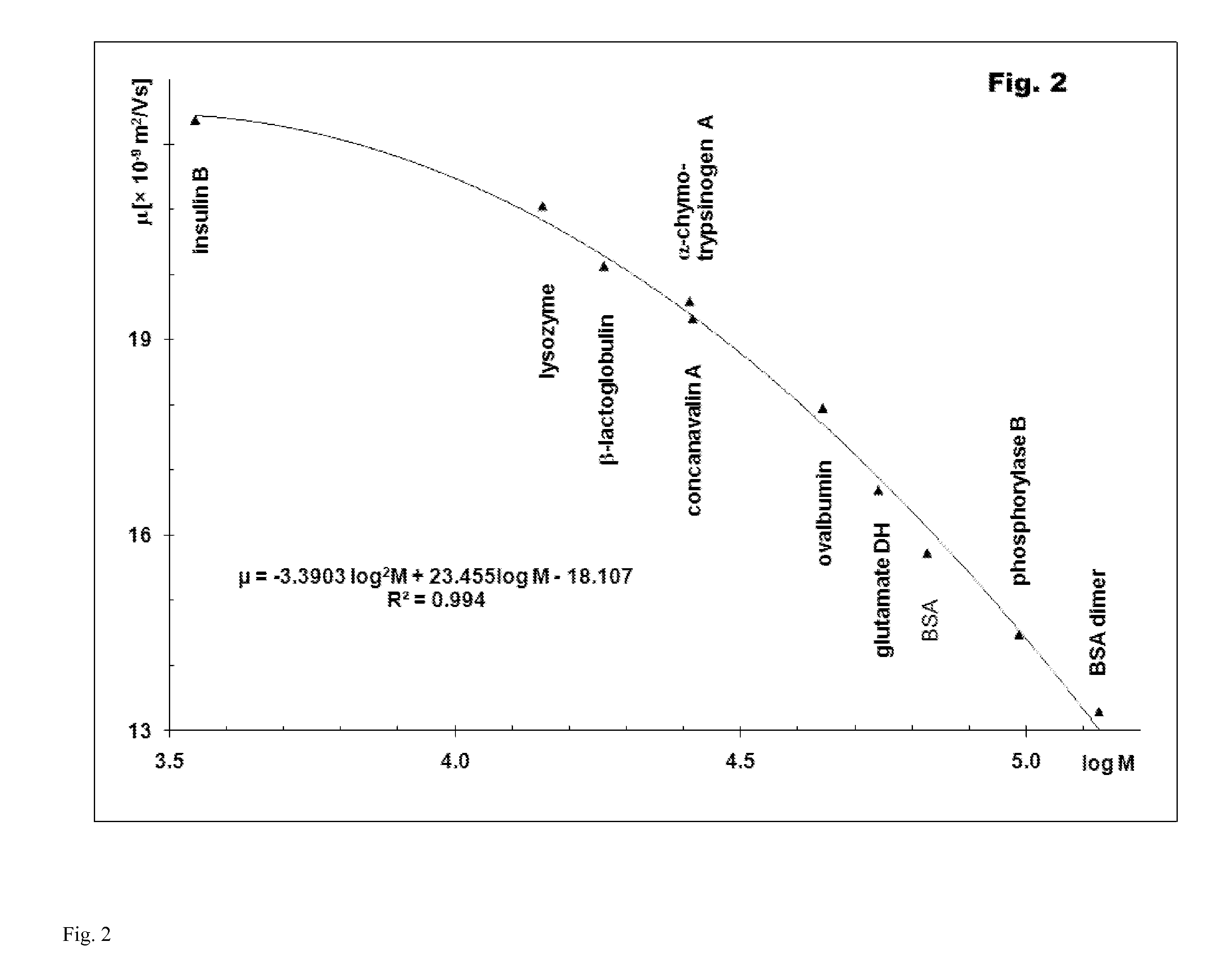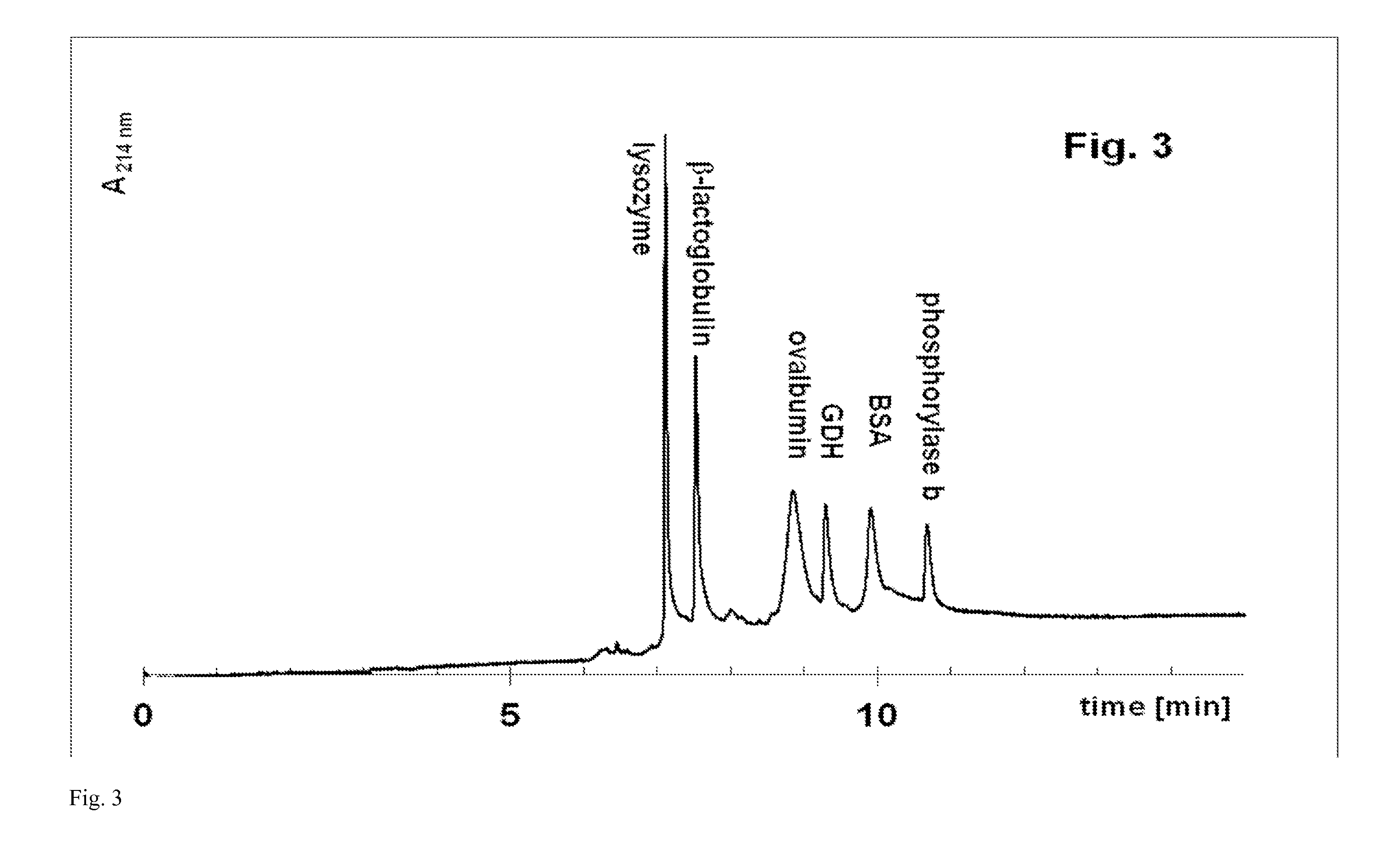Capillary sieving electrophoresis with a cationic surfactant for size separation of proteins
- Summary
- Abstract
- Description
- Claims
- Application Information
AI Technical Summary
Problems solved by technology
Method used
Image
Examples
example 1
Preparation and Composition of the Sieving Matrix
[0132]The separation medium for capillary sieving electrophoresis with a cationic surfactant was formulated to contain cetyldimethylethylammonium bromide (CDMEAB) or cetyltrimethylammonium chloride (CTAC) as the cationic surfactant, polyacrylamide, dextran, or poly(ethylene oxide) (PEO) as the sieving matrix, β-alanine or γ-aminobutyric acid as the buffering co-ion, and 2-hydroxyisobutyric acid or glutamic acid as the buffering counter-ion. Formulation with β-alanine were designed for high resolution separations, formulations with γ-aminobutyric acid were preferred where straight baseline was necessary. The specific formulations contained:[0133]a) 2 g / L CTAC, 100 mM γ-aminobutyric acid, 100 mM glutamic acid, pH about 4.2, and 15 g / L polyacrylamide (Mw 600,000-1,000,000);[0134]b) 2 g / L CTAC, 100 mM γ-aminobutyric acid, 100 mM glutamic acid, pH about 4.2, and 15 g / L polyacrylamide (Mw 600,000-1,000,000);[0135]c) 2 g / L CDMEAB, 100 mM β-a...
example 2
Composition of Sample Denaturing Solution and Method of Sample Preparation
[0141]Several compositions of the sample denaturing solution were formulated to enable protein quantitation with electrokinetic injection:[0142]a) 10 g / L CDMEAB, 100 mM KCl, and 10 g / L dithiotreitol (DTT);[0143]b) 10 g / L CDMEAB, 100 mM potassium phosphate, and 10 g / L DTT;[0144]c) 10 g / L CTAC, 100 mM potassium phosphate, and 10 g / L DTT;[0145]d) 10 g / L CTAC, 100 mM potassium phosphate, and 10 g / L DTT,[0146]e) 10 g / L CTAB, 100 mM KCl, and 10 g / L DTT;[0147]f) 10 g / L CTAB, 100 mM potassium phosphate, and 10 g / L DTT;[0148]g) 10 g / L CDMEAB, 100 mM KCl, and 50 mM tris-(carboxyethyl)phosphine (TCEP),[0149]h) 10 g / L CDMEAB, 100 mM potassium phosphate, and 50 mM TCEP,[0150]i) 10 g / L CTAC, 100 mM potassium phosphate, and 50 mM TCEP,[0151]j) 10 g / L CTAB, 100 mM potassium phosphate, and 50 mM TCEP,[0152]k) 10 g / L CTAC, 100 mM KCl, and 50 mM TCEP,[0153]l) 10 g / L CTAB, 100 mM KCl, and 50 mM TCEP.
[0154]During the sample prepar...
example 3
The Method of Capillary Sieving Electrophoresis
[0155]Capillary sieving electrophoresis with a cationic surfactant was performed in bare or coated fused silica capillary (U.S. Pat. No. 7,799,195), 75 μm ID, 360 μm OD, 335 mm total length, 250 mm effective length. In bare capillaries, poly(ethylene oxide) (PEO) was usually a sieving polymer, but for high-resolution separations, capillaries with internal hydrophilic coating were preferred. After each electrophoretic run, the capillary was flushed with 100 mM citric acid at pressure of 930 mbar for 7 min to remove the sieving matrix from the previous run and wash away proteins and other material potentially adsorbed on the capillary wall. In the next step, the capillary was prepared for the next run: the fresh sieving matrix was pumped into the capillary with pressure of 930 mbar for 3 min. The samples were injected either electrokinetically or by pressure. The amount of the injected sample depended on the protein concentration in the s...
PUM
| Property | Measurement | Unit |
|---|---|---|
| Temperature | aaaaa | aaaaa |
| Temperature | aaaaa | aaaaa |
| Temperature | aaaaa | aaaaa |
Abstract
Description
Claims
Application Information
 Login to View More
Login to View More - R&D Engineer
- R&D Manager
- IP Professional
- Industry Leading Data Capabilities
- Powerful AI technology
- Patent DNA Extraction
Browse by: Latest US Patents, China's latest patents, Technical Efficacy Thesaurus, Application Domain, Technology Topic, Popular Technical Reports.
© 2024 PatSnap. All rights reserved.Legal|Privacy policy|Modern Slavery Act Transparency Statement|Sitemap|About US| Contact US: help@patsnap.com










